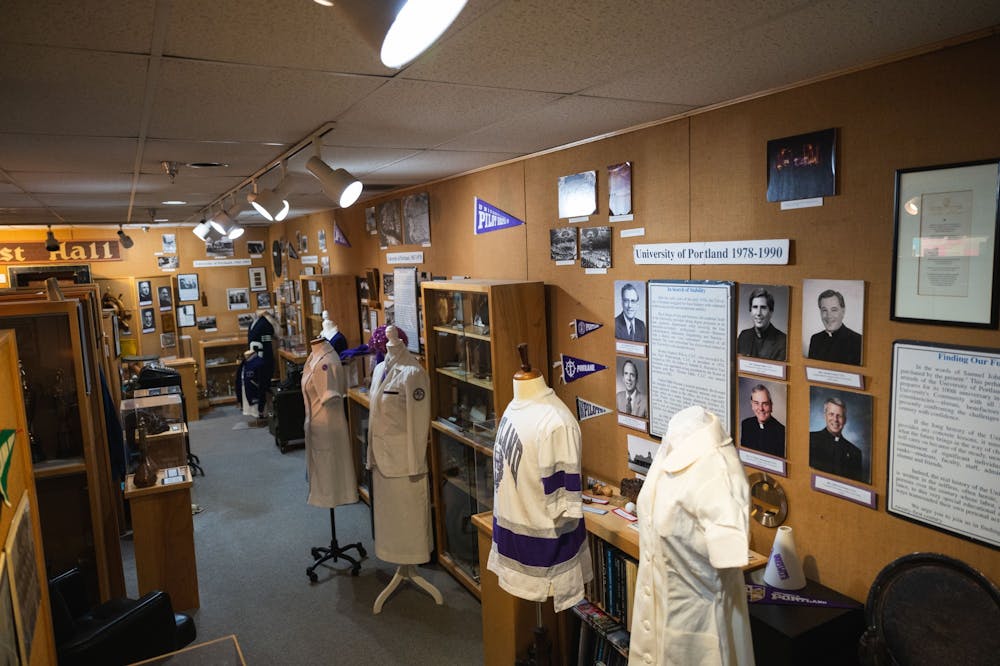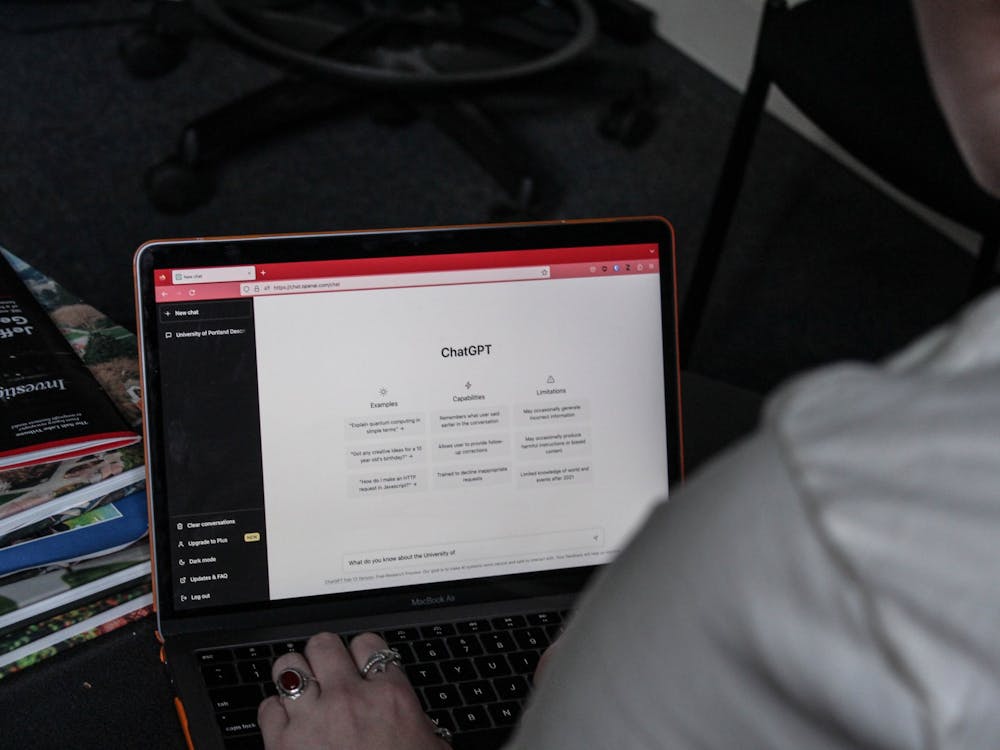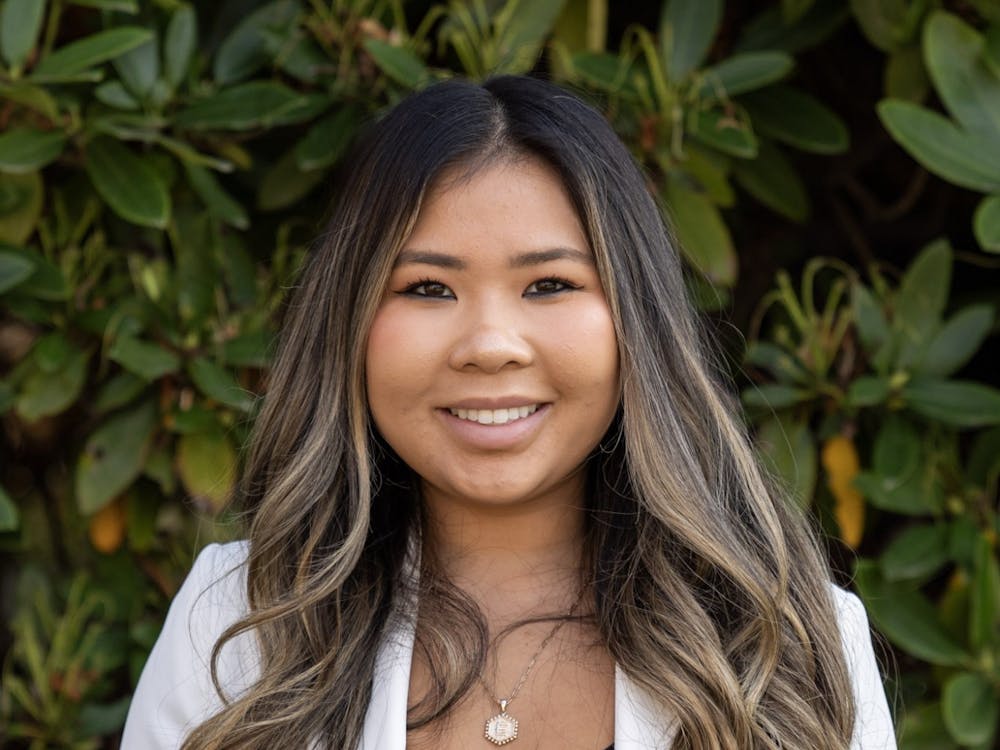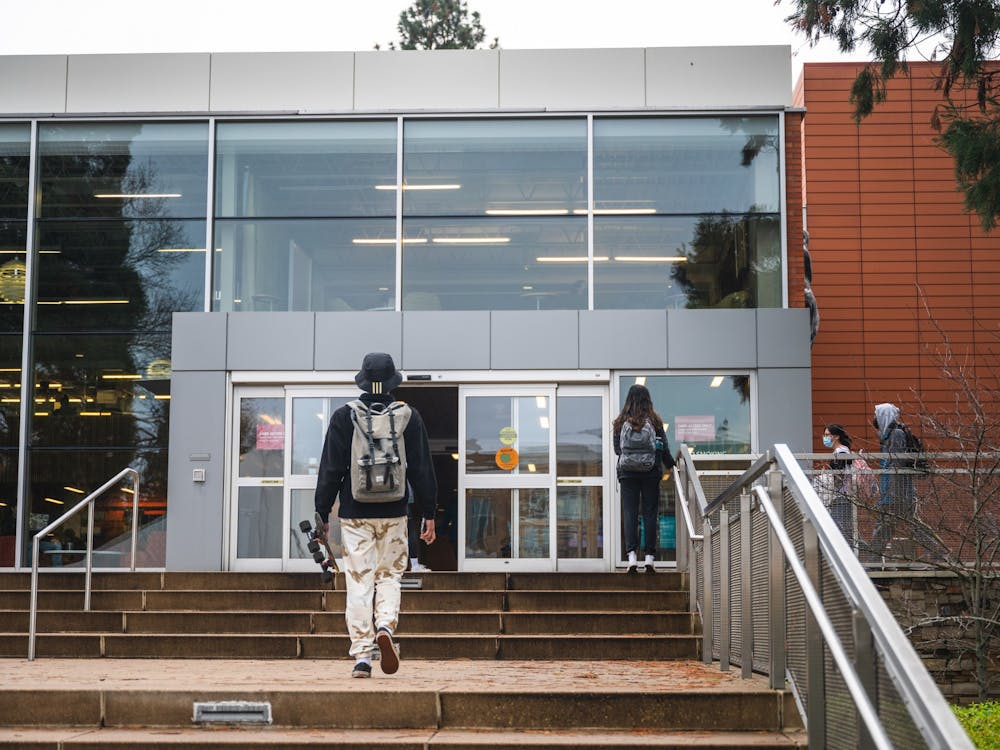While most University of Portland students spend four years on The Bluff, Pilot mascot, Wally, has spent a lifetime. The 2022-2023 academic year marks Wally’s 75th birthday. To celebrate, the University of Portland museum hosted a celebration in the Clark Library with an array of Wally artifacts, including some former versions of our mascot.
Each era of Wally brought a unique appearance to the suit – from the original design of SPU to the purple-suited Wally of today.
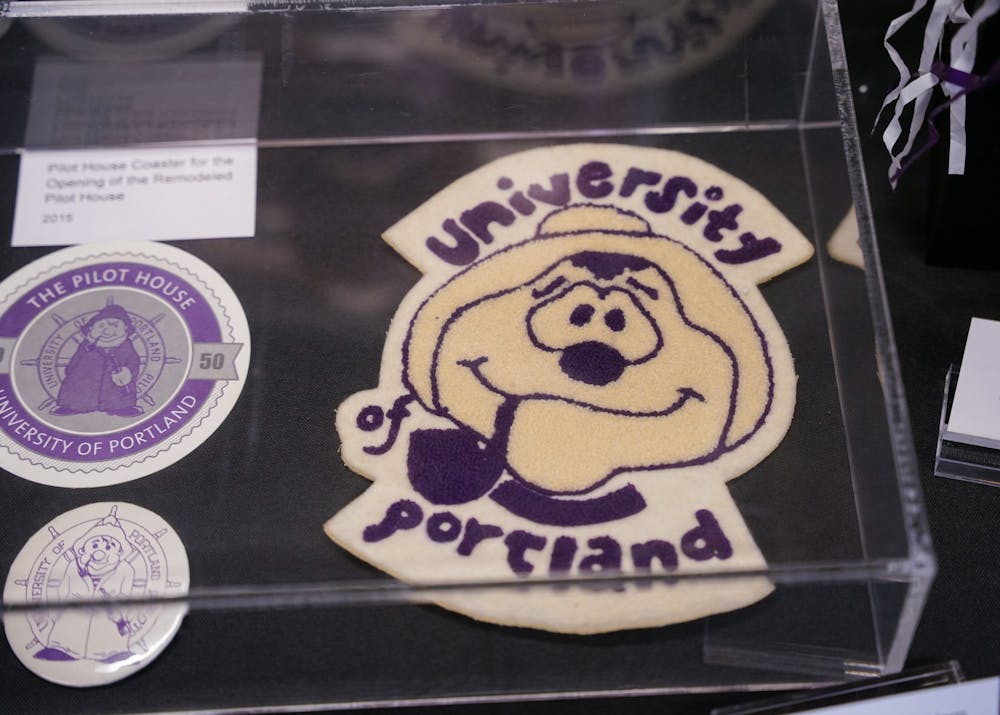
The Wally exhibit was curated by the University Museum, a space located in the basement of Shipstad Hall that houses more than just Wally memorabilia—but an entire collection of UP’s history in photographs and relics.
This semester, the museum hit its 30 year celebration. Museum coordinator Carolyn Connolly has been working at the museum for 16 years, and is a UP alum herself.

“I graduated in ‘88 and then I have a masters of arts in history in 1990,” Connolly said. “I went on to library school, got a master's degree in Library Science and then came back here in 1995. I've been here ever since – I've seen a lot of changes.”
Connolly organized the Wally display in the library, and has done various displays over the years and around campus. Right now, there is one for the University’s songs on the first floor of the library.
“You saw with the Wally pilot display in a library, bringing the museum out to people — that's what I do now,” Connolly said.
The Wally display was one of the larger ones done by the museum and took place during the Freshman-Sophomore parents weekend where students and parents alike could look at Wally’s history through the years.
Out of all the different Wallys, Reference and Instruction Librarian Diane Sotak has a special place in her heart for the Wally of the ‘90s.
“I feel that Wally is enough cartoonish to not be disturbing,” Sotak said.
Since his creation, Wally has been an important figure for UP.
“He certainly is the school cheerleader bringing the school spirit, sort of encapsulating it,” Sotak said.

When not in use, Wallys of the past rest alongside items from different eras and domains of UP’s history. Some of these areas include nursing, the sciences and old academic buildings.
“They created this museum space down here which just opened up in October of 1992,” Connolly said. “So it’s been here ever since, this is a one room museum representing the university's social, athletic, academic and religious history.”
School history
The University of Portland was founded in 1901 as a high school before turning into Columbia University, which then became the University of Portland. The museum works to document all of the many changes UP has seen since starting out on The Bluff.
“We started out as a high school and a junior college,” Connolly said. “1901 we were a high school and junior college and we don't become a full four year university until 1929.”
The name of the University was officially changed to University of Portland in 1935.

What current students see as Waldschmidt Hall — the current administrative building — was once the entirety of the school, acting as a space for classes, dorms and the dining hall. Called West Hall, the building stood covered in ivy. Now in the museum they have remnants of West Hall on display following its renovations.
“When they remodeled West Hall to Waldschmidt Hall, they found these pieces in the ground or on the wall,” Connolly said. “That was when the museum was opening so that's why they brought these over.”
Science and technology
The museum also hosts a section which shows what science and technology used to look like at UP, from old lab equipment to typewriters.

While we have the ability to text who we want, when we want, phones looked a lot different when the university was first starting up. Nestled into the shelves of the museum, you can find old interoffice phones from the ‘20s and ‘30s and rotary dial phones.
The museum also features an old Mac computer, which at first was used a lot by the School of Education of the time. Connolly also enjoys showing the computer to students to show just how big they used to be.
Nursing
The nursing program at UP first started with a partnership with the St. Vincent’s Hospital school of nursing in 1935. While nursing students would receive their degrees from UP, they would take their nursing classes at St. Vincent’s.
Tucked into a back corner of the museum, you can see what old nursing uniforms, equipment and textbooks looked like.
“This would represent nursing textbooks that would have been used, some old nursing equipment, that of course, a lot of it is outdated, which is to show what would have been used,” Connolly said.
The uniforms carry the spirit of the ‘40s with them, consisting of nursing caps, pins and capes — all still Portland Purple. Sitting on shelves next to the mannequins are old tonsillectomy bags, blood pressure machines and bed pans.
Athletics
Across from the nursing section and wrapping around the corner, the athletics section holds trophies and uniforms from the University's time as UP and Columbia University.
Some of these items include old jerseys and football helmets — a sport that no longer exists on The Bluff.
“The football helmet from the ‘40s, which I like to show students because they don’t seem very well padded,” Connolly said.
A notable item from the athletics section is a pair of track shoes from 1914, which were donated by the runner’s family.

The museum is also home to old cheerleading uniforms from the ‘70s. Unlike today, the cheerleaders of the ‘70s were sporting long-sleeves and longer-style skirts.
Museum displays are all designed by Connolly. When groups come to visit campus, like alumni for example, Connolly enjoys putting together displays that will reflect the group’s time on The Bluff.
“Each person is gonna have their own interests at what they like or don't like,” Connolly said. “You just kind of hope that you have enough that is on hand that would be of interest to anybody.”
Museum hours can be found online and those interested in visiting the museum can email to make an appointment.
Kate Caudrado is the News and Managing Editor for The Beacon. She can be reached at cuadrado24@up.edu.
Lulu Heffernan is the Living Section editor for The Beacon. She can be reached at hefferna23@up.edu.



